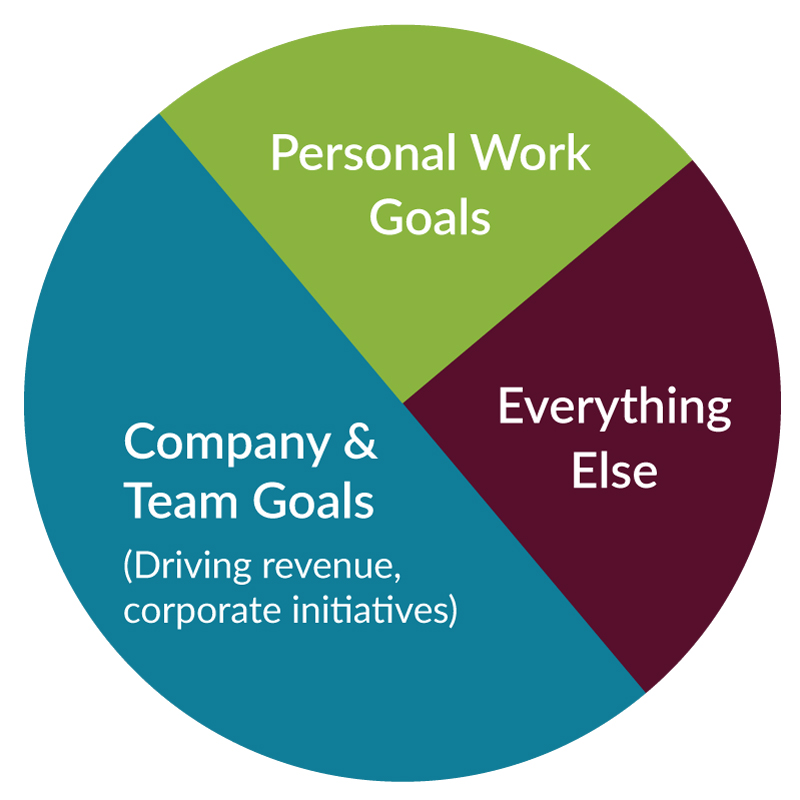The word “no” has an extremely negative connotation. It is often associated with difficult colleagues – people who aren’t “team players” and participants who aren’t dedicated to the cause.
But what if “no” was an empowering word and a chance to get your work-life balance back toward a place where you felt like you were in control. Would you dare speak this word then in the workplace?
At Corporate Path Leadership, we’ve heard the frustrations that stem from lack of time to accomplish important tasks at work. The reasons?
- Too many hours per week spent in meetings
- Too many emails to keep up with
- Too many emergency, or just-in-time requests throughout the day
While we understand and agree with these frustrations, the one thing missing from these conversations about lack of time is the word “no.” People don’t say no to these meeting requests, emails, and emergency projects. When we ask them why, the answer always comes back to wanting to help the team, the organization, etc., and the importance of being seen as a good team player.
So how do you break this vicious cycle?
Our advice is to focus on identifying what really matters, and then learning to use “no” in a positive manner that helps all parties. Here are the steps to achieve it.
STEP ONE: Brainstorm Goals
Think of your company goals, team goals and personal work goals for the next 6 months.
STEP TWO: Map Out Key Projects and Required Tasks
Identify your work actions and projects that directly relate to the company, team, and personal goals listed above.
TIP: These actions may be existing work in progress items, or upcoming actions that have not yet started.
STEP THREE: Get Organized
Cross reference this action and project list with your meeting schedule, time spent addressing email, and current project list. Make a note of any items that do not relate to work actions, as well as projects that directly relate to company, team, and personal goals.
STEP FOUR: Set Priorities for Your Time
Use a litmus test to determine your approximate time allocation. As a rule of thumb it should be:
- 50% of your time spent on company and team goals (such as driving revenue, corporate initiatives, etc.)
- 25% of your time spent on personal work goals
- That leaves only 25% of your time allocated to everything else
STEP FIVE: Identify Requests That Don’t Align With Your Goals
If your existing meeting schedule and to-do list is more than 25% dedicated to activities that do not roll up to work/team/personal goals, then you need to determine how to say “no” to some of these activities. The way to do this in a positive manner is to simply communicate where your priorities need to be right now, and why you need to delay or stop working on some projects that do not match to those goals.
If you are still leery of “no,” consider how the following examples of a positive “no” could work in your situation, or be modified:
- Tell a meeting organizer that you cannot attend an hourly meeting each week on an event that is not matched with your list of priorities. Offer to attend once a month, or maybe the first 10 minutes of the meeting to see if there are key actions related to you.
- Respond to an email request for help on a non-priority project by saying something like “That sounds like an interesting idea. I don’t have time right now to add that to my plate, but I may have room in 30/60/90 days. Can we circle back then?”
- Respond to an emergency request with “I understand the urgency. I have two other critical projects that take priority over this request. If you can wait until <insert timing here>, I can help out. Otherwise, I’ll have to ask that you seek assistance from someone else.”
TIP: Remember, saying “no” becomes much easier and positive when you have a reason behind it. If you are in a position to offer another solution, that also shows your willingness to still be a team player.
We challenge you to take the organization steps above and help create that environment where you can deliver a positive “no” with confidence.
Contact Us Today
We make it easy to jump start success. Simply contact us and share your current team challenge or need, and we’ll respond with program ideas to innovate your team performance.


